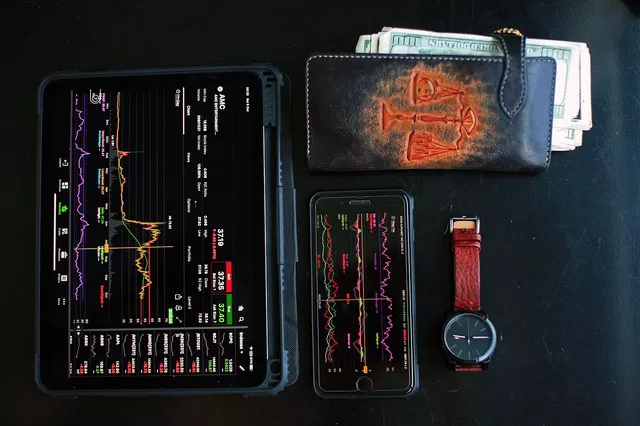The world of financial markets operates around the clock, with various instruments and assets traded across different time zones. CME Group, one of the largest derivatives marketplaces globally, facilitates trading in a wide range of futures contracts. These contracts enable investors to speculate on the future price movements of various commodities, indices, currencies, and interest rates. As traders seek to optimize their strategies, understanding the trading hours of CME futures contracts is paramount.
The Influence of Time Zones
The financial world is a global network, where markets in different regions open and close at varying times due to the influence of time zones. As a result, investors can trade instruments such as stocks, bonds, and futures across multiple markets, enabling continuous trading and providing opportunities around the clock.
CME Group, headquartered in Chicago, operates several futures exchanges, including the Chicago Mercantile Exchange (CME), the Chicago Board of Trade (CBOT), and the New York Mercantile Exchange (NYMEX). Given its diverse range of products and the global nature of trading, CME Group facilitates trading during multiple sessions to accommodate participants from around the world.
Regular Trading Hours (RTH) and Extended Trading Hours (ETH)
CME futures trading hours are divided into two main segments: Regular Trading Hours (RTH) and Extended Trading Hours (ETH). Regular Trading Hours represent the core trading period when most participants are active, while Extended Trading Hours provide additional opportunities for traders to execute orders outside of the regular session.
Regular Trading Hours typically align with the working hours of major financial centers. For CME Group exchanges, RTH generally begin at 8:30 AM and end at 3:15 PM (Central Time), although specific trading hours may vary based on the product being traded.
Extended Trading Hours, also known as after-hours trading, allow traders to place orders before or after the regular session. These hours can vary based on the specific product and the exchange. CME Group offers ETH for select products, enabling traders to manage positions and respond to market-moving events that occur outside of regular trading hours.
CME Globex: Enabling 24/5 Trading
CME Globex is the electronic trading platform operated by CME Group, enabling traders to access the markets 24 hours a day, five days a week. This platform provides a seamless experience for participants to trade CME futures contracts across different time zones, offering flexibility and accessibility.
CME Globex supports both Regular Trading Hours and Extended Trading Hours, allowing traders to manage their positions and execute orders regardless of their geographic location. The platform’s global reach makes it a valuable tool for traders who want to capitalize on market movements at any time of day.
Overlapping Trading Sessions
One of the unique features of the global financial markets is the overlapping of trading sessions. Due to time zone differences, certain periods experience increased trading activity as multiple markets are open simultaneously. These overlapping sessions create opportunities for increased liquidity and heightened volatility.
For instance, when the trading hours of European and U.S. markets overlap, the increased participation can lead to significant price movements in commodities, indices, and currencies. Traders who monitor these overlapping sessions can capitalize on heightened trading activity and make informed decisions.
Strategies for Navigating CME Futures Trading Hours
Navigating CME futures trading hours requires a strategic approach that aligns with an investor’s objectives, risk tolerance, and preferred trading style. Here are some common strategies employed by traders:
1. Day Trading: Day traders focus on short-term price movements and typically execute multiple trades within a single trading session. They leverage the increased volatility during overlapping trading sessions to capture quick profits.
2. Swing Trading: Swing traders hold positions for several days or weeks, aiming to capitalize on price trends. They may use CME Globex’s extended trading hours to manage positions outside of regular trading hours.
3. Position Trading: Position traders take a longer-term view, holding positions for several months or even years. They focus on fundamental analysis and major market trends, which allows them to make trading decisions during regular trading hours.
4. Arbitrage: Arbitrageurs exploit price discrepancies between different markets or instruments. Overlapping trading sessions provide opportunities for arbitrage as prices may differ across various exchanges due to different participants, news events, or market conditions.
5. News Trading: Traders who specialize in news trading focus on market-moving events and data releases. They adjust their trading strategies based on scheduled economic announcements and central bank decisions, often during regular trading hours.
Conclusion
Understanding CME futures trading hours is essential for traders seeking to optimize their strategies and capitalize on market opportunities. The global nature of financial markets, coupled with the advent of electronic trading platforms like CME Globex, enables participants to access markets around the clock. Whether traders are day trading, swing trading, position trading, engaging in arbitrage, or focusing on news events, a comprehensive grasp of trading hours empowers them to make informed decisions and navigate the dynamic landscape of CME futures trading.


